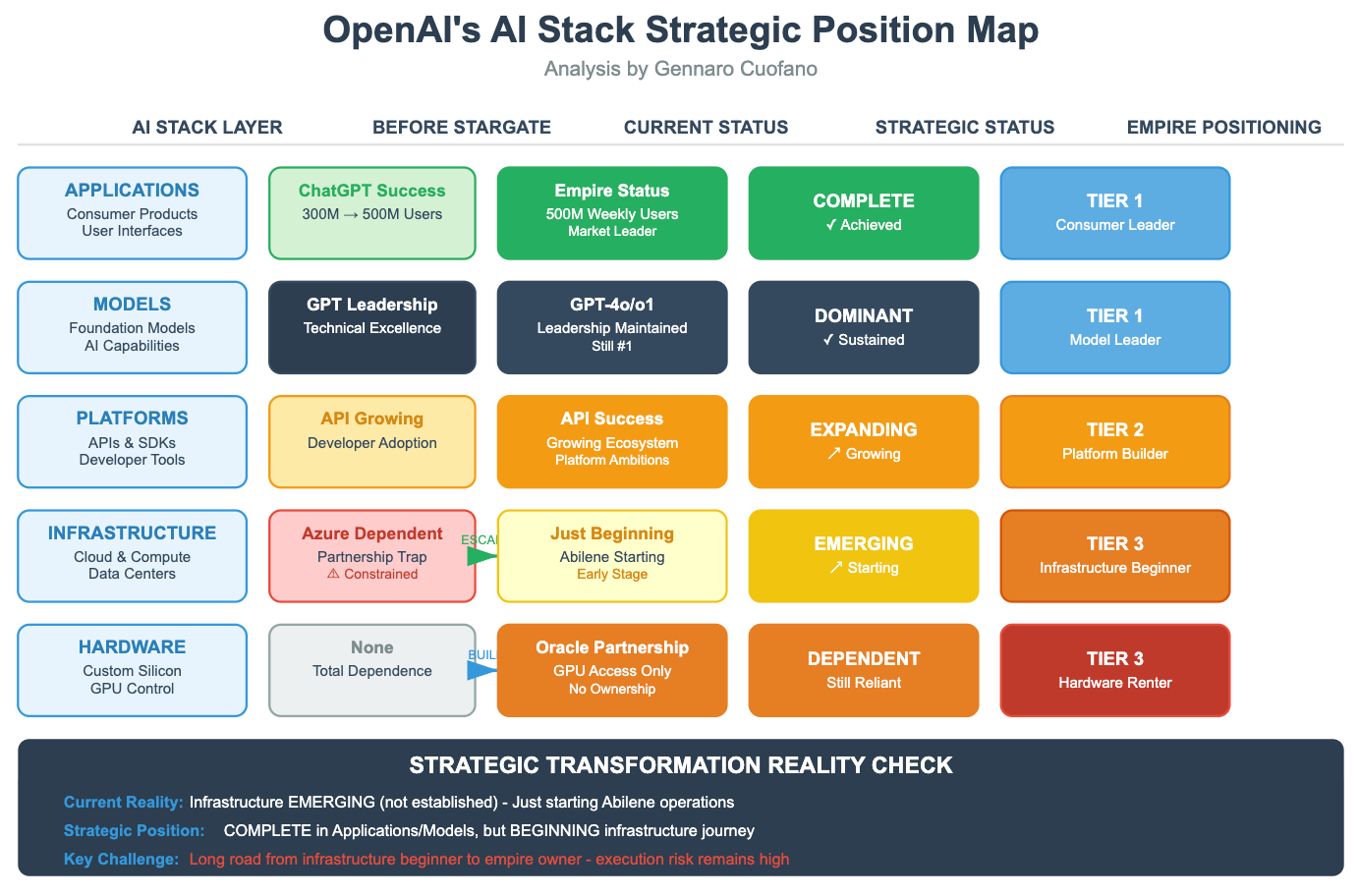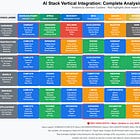OpenAI & The Stargate Reality Check - Report
In January 2025, Sam Altman stood alongside President Trump at the White House, announcing the most ambitious infrastructure project in AI history. The $500 billion Stargate initiative promised to transform OpenAI from a model company into an infrastructure empire. Six months later, the reality is far more complex and revealing than the headlines suggested.
Indeed, good news: just yesterday, it was announced that OpenAI is tightening its partnership with Oracle—a first $30 billion per year deal—to deliver 4.5 gigawatts of capacity as part of Stargate. For context, that is enough power for 3.5 to 4.5 million homes across the US.
Yet, and that is the thing, it seems SoftBank was not involved, and that is not good news.
The brutal truth: OpenAI remains an infrastructure beginner, not an infrastructure owner.
While they've successfully escaped Microsoft's partnership prison, they're still years away from the vertical integration that defines true AI empires. Understanding this gap between ambition and reality reveals crucial insights about the future of AI competition.
Let’s see, though, how OpenAI is progressing along the AI stack, based on where Stargate goes.




